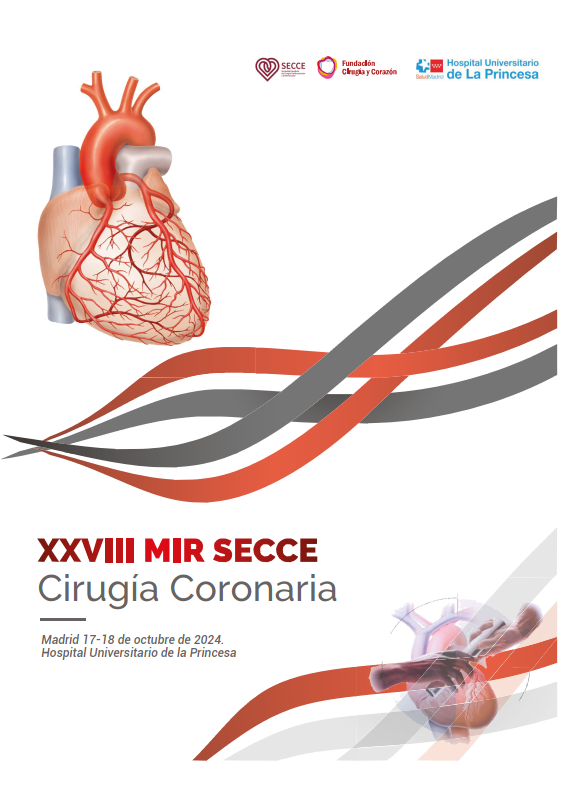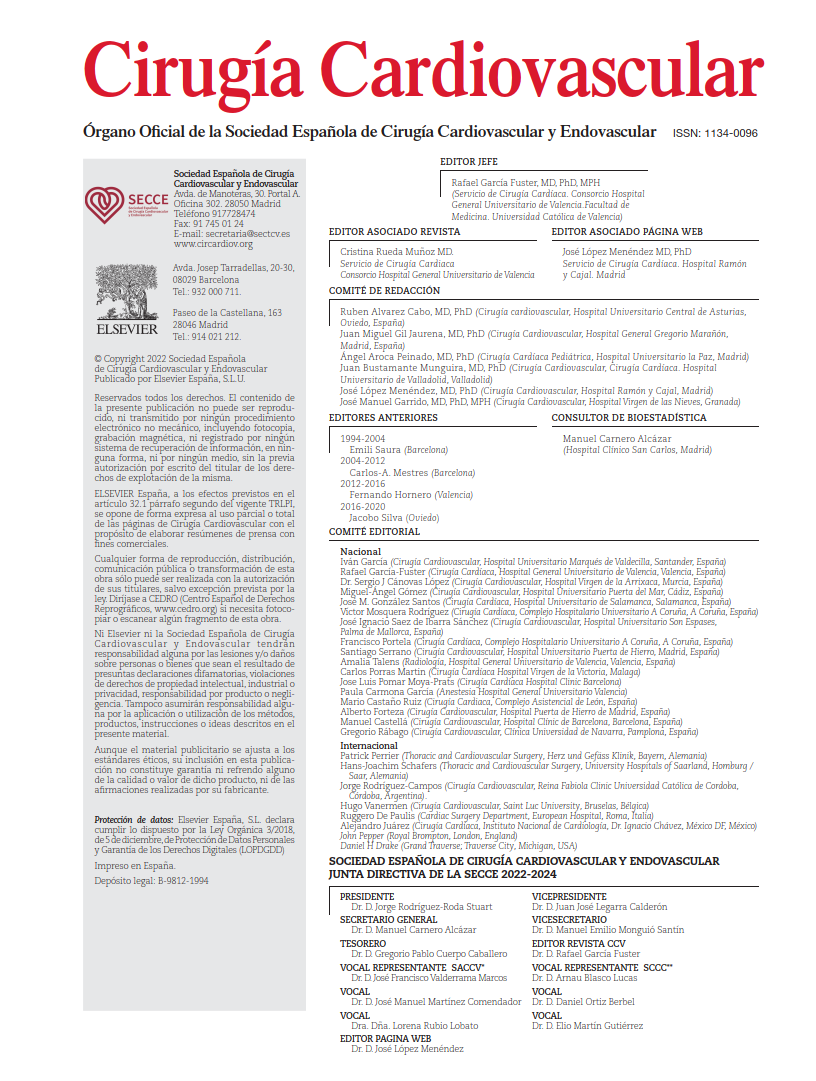Following the publication of last year’s consensus on the management of Ebstein anomaly (EA) in neonates and infants, the American Association for Thoracic Surgery (AATS) has completed its clinical guidelines with specific recommendations for pediatric and adult patients.
This second document addresses multiple key aspects that will be broken down progressively:
- Preoperative assessment
The presence of congestive heart failure (CHF), cyanosis, left ventricular (LV) dysfunction (LV ejection fraction <40%), severe cardiomegaly (cardiothoracic index >0.65), and persistent arrhythmia in non-neonatal patients with EA is associated with increased morbidity and mortality (I-B).
Cyanosis reflects impaired right heart hemodynamics—whether due to right ventricular (RV) dysfunction or severe tricuspid regurgitation—causing a right-to-left shunt. Conversely, LV dysfunction is poorly tolerated and strongly affects prognosis.
Cardiac magnetic resonance imaging (MRI) is recommended for the evaluation of ventricular volumes, tricuspid regurgitation, and RV stroke volume (I-B).
MRI has become the reference modality for accurate quantification of chamber volumes and flow in EA. Echocardiography may be limited in these patients due to the marked cardiac dilation. A major challenge with MRI is the lack of standardized measurement protocols. The 4D cine modality is emerging as a promising technique for more precise assessment of ventricular volumes and tricuspid regurgitation.
Exercise capacity should be assessed in older children and adults using cardiopulmonary exercise testing to reveal occult intolerance (I-B).
Due to the chronic nature of EA, especially in children, patients often underestimate their limitations. While resting oxygen saturation remains a traditional marker of severity, exercise testing provides essential information to monitor disease progression and determine optimal timing for surgical intervention.
- Surgical recommendations and indications
Surgery is recommended in symptomatic patients with fatigue (unrelated to other causes), impaired exercise tolerance, cyanosis, or exertional dyspnea (I-B).
“Ebstein repair” typically refers to the cone technique described by da Silva, closure of any atrial septal defect (ASD), plication of the atrialized portion of the RV, and right atrial reduction atrioplasty. This strategy aims to alleviate RV volume overload and improve systolic function. In asymptomatic patients, objective evidence of exercise intolerance is necessary to justify surgical indication.
Cone repair of the tricuspid valve (TV) should be considered when surgery is indicated (I-B).
Unlike older techniques such as those by Danielson or Carpentier, the cone repair is applicable to almost all EA variants and is associated with low mortality. It involves complete detachment and delamination of the TV leaflets, mobilization, and reconstruction into a cone-shaped valve, which is reimplanted at the true anatomical annulus (rather than within the RV). Plication of the atrialized RV reduces annular size and facilitates competent valve function.
Surgery is recommended in cases of severe tricuspid regurgitation with progressive RV dilation confirmed by echocardiography or MRI (I-B).
Surgery may also benefit asymptomatic patients with severe tricuspid regurgitation, moderate RV enlargement, and favorable valve anatomy for repair (IIa-C).
Cone repair may be considered between 3 and 5 years of age in the presence of severe tricuspid regurgitation, moderate RV dilation, and high likelihood of successful repair (IIa-C).
Such interventions should be performed in experienced centers and tailored to individual patient profiles. In symptomatic patients or those with hemodynamic compromise, delaying surgery risks further RV enlargement and diminished long-term outcomes. From age 3–5, cone repair can be safely and effectively performed. In younger patients one should consider adding a Glenn procedure to unload the RV and augment LV preload.
The addition of a Glenn shunt is reasonable in the presence of RV dilation, severe RV dysfunction, a right-to-left atrial pressure ratio >1.5, or failure to wean from cardiopulmonary bypass (IIa-B).
Glenn shunt—connecting the superior vena cava to the right pulmonary artery—reduces preload to a dysfunctional RV and improves LV filling. Catheterization is essential to evaluate LV performance before Glenn, especially when LV compromise is suspected.
Eligibility criteria include:
- LV end-diastolic pressure <12 mm Hg
- Transpulmonary gradient <10 mm Hg
- Mean pulmonary artery pressure <18 mm Hg
Relative indications for Glenn include:
- Severe cardiomegaly (cardiothoracic index >70%)
- RV end-diastolic volume >250 mL/m²
- RV ejection fraction <25%
Fenestration of the atrial septum is a less effective method to decompress a dysfunctional RV but may be used in combination with Glenn.
Tricuspid valve surgery is not recommended in the setting of irreversible biventricular dysfunction (LV ejection fraction <25%, RV ejection fraction <25%) (III-B).
Nor is ASD closure recommended in patients with severe EA or severe tricuspid regurgitation (III-C).
In such cases, closing the ASD may worsen hemodynamics—especially in cyanotic patients—by accelerating RV dilation, reducing LV filling, and compromising systemic output.
In older patients (>60 years), tricuspid valve replacement (TVR) is considered a reasonable option (IIa-B).
Porcine bioprostheses are preferred due to their pliability, allowing more physiologic movement in low-pressure chambers like the right heart. A Glenn shunt is discouraged in this context because the 30–40% reduction in RV preload may raise the risk of prosthetic thrombosis. If TVR is performed, a smaller prosthesis should be selected to ensure a transvalvular gradient of 5–6 mm Hg, facilitating optimal leaflet motion. Mechanical prostheses are not recommended.
When paroxysmal or persistent atrial fibrillation (AF) is present, performing a Maze procedure during surgery is considered reasonable (IIa-B).
If there is a history of arrhythmia, a preoperative electrophysiological study is essential, since portions of the cavotricuspid isthmus may become inaccessible post-repair. The surgical procedure itself—particularly the reduction atrioplasty—reduces the incidence of arrhythmias by maintaining sinus rhythm and minimizing atrial enlargement, which is key in preventing recurrence.
- Medical management and perioperative considerations
Preoperative arrhythmia evaluation is indicated in all patients with EA and should include a focused history, symptom review, and documented evidence of arrhythmia on ECG or rhythm monitoring (I-B).
EA is associated with both supraventricular and ventricular arrhythmias. Over time, arrhythmia burden tends to increase due to progressive chamber dilation and altered hemodynamics.
A preoperative electrophysiologic study should be performed in all patients with documented or suspected arrhythmias based on history (IIa-C).
Intraoperative ablation is reasonable when preoperative catheter ablation is incomplete or when the arrhythmogenic substrate will become inaccessible post-repair (I-B).
Performing catheter ablation close to the surgical date enhances intraoperative visualization of previous lesions, which allows the surgeon to complete ablation lines effectively in coordination with the electrophysiologist.
The risk of arrhythmia increases with age, and long-term follow-up is necessary for monitoring and control (I-B).
The underlying cardiomyopathy in EA, combined with factors such as atrial dilation, atrialized RV segments, surgical scar tissue, and advancing age, all contribute to ongoing arrhythmic risk.
Additional recommendations, particularly regarding anticoagulation, include:
In patients with EA and LV dysfunction, acquired disease should be excluded and managed per standard guidelines (I-B).
Systemic anticoagulation may be beneficial after complex TV repair in select cases and can be extended for up to 3 months postoperatively (IIb-C).
Systemic anticoagulation is reasonable following bioprosthetic TVR, typically for 3–6 months (IIa-C).
COMMENTARY:
Ebstein anomaly (EA) is a highly heterogeneous condition—no two patients are alike. These updated recommendations represent a significant advancement toward the standardization and optimization of care for this complex congenital disease. Unresolved questions remain, such as the ideal timing and approach for cone repair following a prior Starnes procedure, which future studies may clarify. This consensus document, together with the neonatal and infant-focused guideline previously summarized on our blog, is essential reading for all professionals involved in the care of patients with EA.
REFERENCE:
Expert Consensus Panel; Chai P, Konstantinov IE, da Fonseca da Silva L, Qureshi M, Wackel P, Knott-Craig C, et al. The American Association for Thoracic Surgery (AATS) 2025 Expert Consensus Document: Management of Ebstein anomaly in children and adults. J Thorac Cardiovasc Surg. 2025 Jul;170(1):1-16. doi: 10.1016/j.jtcvs.2025.03.014.



